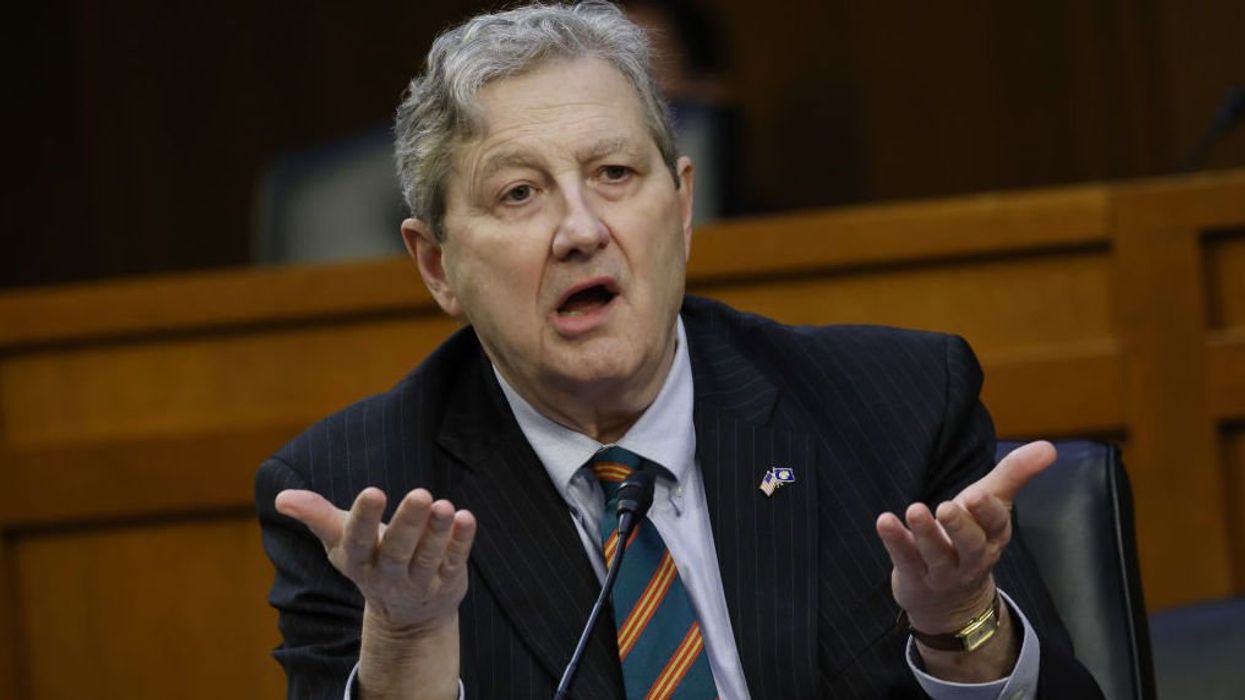
© 2024 Blaze Media LLC. All rights reserved.
Obama is increasingly appearing to be a theatrical presidency, illustrated by gaudy symbols, advertising, and swooping rhetoric (“hope,” “change”) but little new thinking and a lack of the political will
 President Barack Obama gestures as he speak during his visits Manor New Technology High School, Thursday, May 9, 2013 in Manor, Texas. (Credit: AP)
President Barack Obama gestures as he speak during his visits Manor New Technology High School, Thursday, May 9, 2013 in Manor, Texas. (Credit: AP)
How can Obama save his second term? Advice is rolling in from near and far. The Economist’s recent cover story, “How to Save His Second Term,” warned of the “perils of paralysis.” Bill Clinton’s Labor Secretary Robert Reich observes, in The Christian Science Monitor, that “Obama’s White House is defensive and floundering.” The Washington Post argues that Obama’s failure on gun control earlier this year “robs” him of a desperately needed win and tests Obama’s leadership on other priorities—such as immigration reform and budget reform. The New York Times’ suggests that inaction on energy policy and the environment shows the president’s current lack of “assertive leadership.”
All of these articles, and a host of others, have three simple themes in common. First, Obama is failing as a leader. Second, there are substantive ways that he could improve as a leader by focusing on specific issues.But, he won’t because Team Obama is not interested in leading: they are interested in image. All of these writers agree that the White House is fixated on legacy rather than leadership.
Obama is failing as a leader. Harvard University professor Joseph S. Nye recently published a book about the difference between transformational presidents (whose vision and energy change the nature of political discourse, i.e. FDR and Reagan) and transactional presidents (who skillfully manage the system, like Ike and Bush ’41). Both types of presidents lead, but in different ways. Obama is apparently doing neither. Indeed, Obama is increasingly appearing to be a theatrical presidency, illustrated by gaudy symbols, advertising, and swooping rhetoric (“hope,” “change”) but little new thinking and a lack of the political will necessary to manage the machinery of government (e.g. the IRS and multiple Justice Department scandals).
The fact that pundits and wonks are rushing to proffer solutions to Obama, including two separate articles in the most recent The Economist magazine, indicates that there is a consensus out there that all is not lost for the Obama presidency. Three broad suggestions rise to the top. First, stop alienating tens of millions of Americans by taking radical positions on social issues, such as same-sex marriage and Obama’s notorious recent praise of Planned Parenthood (Obama was the first sitting president to address Planned Parenthood, at the same time as the Kermit Gosnell baby murder trial was unfolding). There is little space left for trust or compromise with centrist and conservative Americans who feel that this president has left the principles of life and family he once espoused.
Second, continue the many effective Bush-era policies on national security that seem to be working. The use of drones, the fact of Guantanamo and the detention of terrorists, the troop surges to Afghanistan and now the measured disengagement, and robust action against terrorists around the world are the marks of a leader. The president’s first responsibility is national security, and despite the fact that the Left wing of his coalition is apoplectic about Obama’s tough national security approach, he has generally been successful here. Leaders know how to prioritize, and they are cautious about major actions where there is no good end-state despite good intentions (e.g. Syria).
Third, to be successful, Obama needs to focus on issues rather than media spectacles. Success must be defined as promoting American prosperity and security for the next generations of Americans. Obama could take a leaf from Ronald Reagan’s second term: Reagan personally interceded not only with the opposition, but with recalcitrant members of his own party in order to push forward an agenda that included tax reform, defense reform, immigration reform, and arms control.
Obama could likewise opt for pragmatic solutions on issues spanning the Keystone Pipeline to the tax code to entitlement reform that would make the America that his daughters will inherit more prosperous and secure. But this form of leadership requires leaving the limelight, signing off the constant White House media feed, working the phones, and meeting with individual legislators in order to forge the kinds of compromises necessary in order to achieve these things. It means getting the Executive Branch under control, and likely some firings. Obama tried “transformation,” but it was really just melodrama. Perhaps he can now try a transactional approach, before he really becomes a lame duck.
Want to leave a tip?
We answer to you. Help keep our content free of advertisers and big tech censorship by leaving a tip today.
Want to join the conversation?
Already a subscriber?
more stories
Sign up for the Blaze newsletter
By signing up, you agree to our Privacy Policy and Terms of Use, and agree to receive content that may sometimes include advertisements. You may opt out at any time.
© 2024 Blaze Media LLC. All rights reserved.
Get the stories that matter most delivered directly to your inbox.
By signing up, you agree to our Privacy Policy and Terms of Use, and agree to receive content that may sometimes include advertisements. You may opt out at any time.


